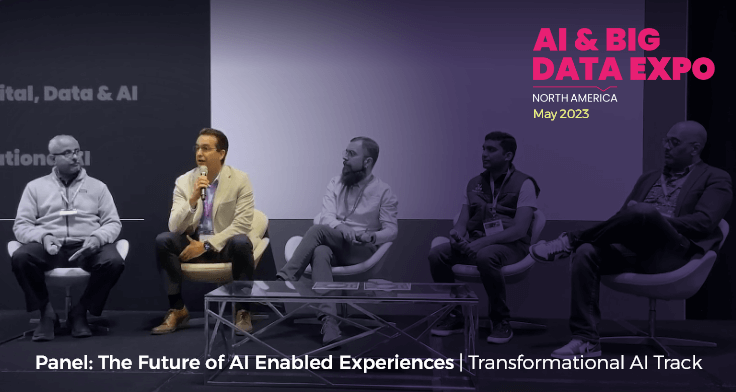The term “Artificial Intelligence” (AI) has become increasingly prevalent in recent times, with particular attention given to “Generative AI”. While concept of AI-generated answers, text, code, and images has been around for a while, the emergence of ChatGPT has brought AI to the forefront of everyone’s minds. However, it is important to recognize that Generative AI is just one facet of the vast field of AI.
Among the numerous applications and possibilities offered by AI, one area stands out for many companies: how to utilize AI for acquiring new customers and retaining existing ones.
I recently had the privilege of participating in a forum with other thought leaders who are actively exploring ideas in this domain. During our discussions, a particular concept took center stage: Hyper-personalization.
Understanding Hyper-Personalization
Hyper-personalization, although not overly complex, is an immensely powerful concept. In today’s world, most internet users have experienced e-commerce and are familiar with online shopping. It’s hard to miss the personalized product recommendations provided by reputable online retailers based on our search history and personal profiles. Many of these systems leverage sophisticated AI engines to deliver such tailored experiences.
It is also important to acknowledge that the recommendations may sometimes fall short of meeting customer expectations. Simply basing recommendations on demographics or past searches or purchases can lead to inaccuracies, as it doesn’t capture the dynamic nature of customer intent. Recognizing that customer interests and preferences can evolve over time is crucial to deliver truly relevant and personalized experiences.
Achieving Customer Intimacy at Scale
If (or, more appropriately, when) AI becomes capable of deciphering customer intent more effectively, Hyper-personalization will become a reality. Envision a scenario where visiting a website results in receiving highly relevant recommendations based on a comprehensive understanding of your preferences, and accurately predicting the reasons behind your shopping activities. This enhanced shopping experience would yield substantial benefits, enabling companies to attract a larger customer base, encourage increased spending on their websites, and foster customer loyalty.
AI holds the potential to assist companies in achieving this elusive goal of Customer Intimacy at Scale. While establishing customer intimacy is relatively easier when dealing with a small number of customers (as seen in the super luxury automobile industry), online retailers with tens of thousands, or even millions, of customers can now leverage AI to unlock this opportunity.
But (and there is always a but), all these remarkable ideas will only materialize if the AI engines have access to the appropriate data. The data must not only be comprehensive but also accurate, up-to-date, and dependable. While we can develop the most sophisticated AI algorithms and models, their effectiveness is futile if the underlying data lacks quality. In fact, it can result in the unintended consequence of alienating customers. Consider data as the bedrock of a house: would you prefer constructing upon a solid concrete foundation or on unstable ground fraught with rocks, potholes, and shifting sand?
Navigating the Hyper-Personalization Journey
While the benefits are straight forward, the question arises: Where should one begin? How does one progress towards turning hyper-personalization into a tangible reality? Irrespective of where you stand today, there are fundamental steps that you need to take in order to achieve the desired level of customer intimacy with Hyper-Personalization.
- Evaluate the State of Your Customer Data: Before diving into any AI initiatives, it is essential to assess the completeness, accuracy, timeliness, and reliability of your existing customer data. This evaluation should encompass data stored in systems such as Customer Data Platforms (CDPs), Customer Relationship Management (CRM), or Enterprise Resource Planning (ERP) and other sources of customer data within your enterprise. Identifying any deficiencies, gaps, or issues & fixing them is crucial.
- Enhance Customer Data with External Sources: To truly understand your customers’ intentions when purchasing your products, it is unlikely that you will have all the necessary information solely within your own systems. Explore the potential of augmenting your customer data with complementary information from both internal and external sources. Thinking creatively and considering external factors such as weather conditions, political events, economic indicators, social trends, festivities, and even competitor behavior can provide a competitive advantage. In many cases, valuable information can be obtained from reliable online sources at no cost.
- Establish Strategic and Realistic Goals for your Teams: Based on your organization’s maturity level, set clear and achievable goals for your Data Science & AI teams to drive hyper-personalization. It is crucial to strike a balance between ambition and practicality. Emphasize a fast-paced approach, allowing for experimentation, learning from failures, and iterating until desired results are achieved. Hyper-personalization is unlikely to be accomplished in a single attempt, so perseverance and adaptability are key.
- Seek Help from Experienced Partners: While some organizations may be better prepared to tackle complex customer data & AI challenges, others may be at the beginning of their journey. For those starting out, seeking external assistance can expedite the process. Companies like Infocepts offer a fully managed AI solution, DiscoverYai to help you unlock the power of AI-driven insights, without the risk of high investments in technology or expertise to achieve guaranteed results in 90 days or less.
High-Quality Data: The Foundation for Success
While the examples in this blog primarily focus on online retailers, the significance of AI and hyper-personalization applies across various industries. Businesses must leverage AI for hyper-personalization to attract or retain customers in this digital era and investing in these initiatives NOW is crucial, considering advancements like ChatGPT.
As you dive into your own Hyper-Personalization journey, it is important to remember the wisdom shared by one of my professors: “To reach the stars, you must have solid ground to push from.” Without reliable and comprehensive data, the outcomes and insights generated by AI may be compromised or misleading. Therefore, organizations must prioritize data quality and ensure that the information fed into AI models is trustworthy and representative of the desired outcomes. By doing so, businesses can maximize the benefits and outcomes.
As always, there are plenty of privacy and security concerns around the data we make available to these AI engines, but that’s a topic for another blog!
Recent Blogs

LLMs – Self-Hosting or APIs? The Million Dollar Question
April 16, 2025

Fashion Retail in the Age of AI: Redefining Design and Customer Experience with Data & Intelligence
April 11, 2025

Navigating the Tariff Shock: How AI and Advanced Analytics Fuel Supply Chain Resilience
April 7, 2025

From Data to Decisions: The Evolving Role of Data Science & AI in Supply Chain
March 20, 2025


